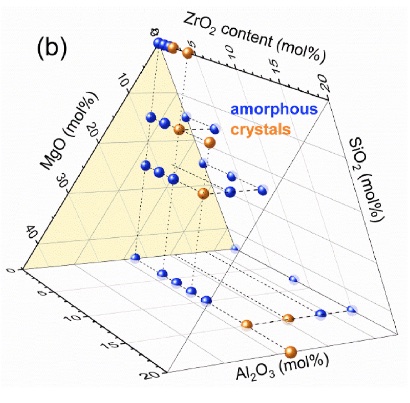Ask for a reprint
email :
* Give your email
2022
ACL
|
A.Zandona, M.Moustrous, C.Genevois, E.Véron, A.Canizarès, M.Allix, 'Glass-forming ability and ZrO2 saturation limits in the magnesium aluminosilicate system', Ceram. Int. 48 8433 (2022) doi:10.1016/j.ceramint.2021.12.051
Containerless melting was employed to evaluate the influence of increasing ZrO2 additions on the glass-forming ability of peraluminous melts in the magnesium aluminosilicate system. The saturation limit of this oxide in glasses along the silica-cordierite join (SiO2–Mg2Al4Si5O18) is inversely proportional to the SiO2 content; however, a limited solubility of ZrO2 in melt-quenched silica exists (∼2 mol%). Peraluminous samples (particularly MgO-free samples) exhibited a substantially higher capability of incorporating ZrO2 without undergoing devitrification during cooling. TEM investigations revealed phase separation in all amorphous samples off the MgO = Al2O3 line, with ZrO2 preferentially segregating into a SiO2-depleted phase. These results identify the key role of Al2O3 for the structural incorporation of ZrO2 in silicate melts, opening up alternative pathways for the development of glasses and glass-ceramics respectively based on the homogeneous distribution of ZrO2 or, in turn, on its exploitation to induce phase separation and crystal nucleation.
|

|